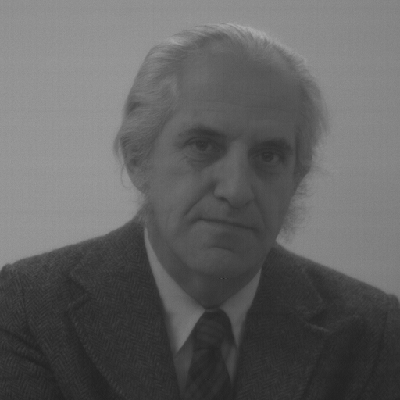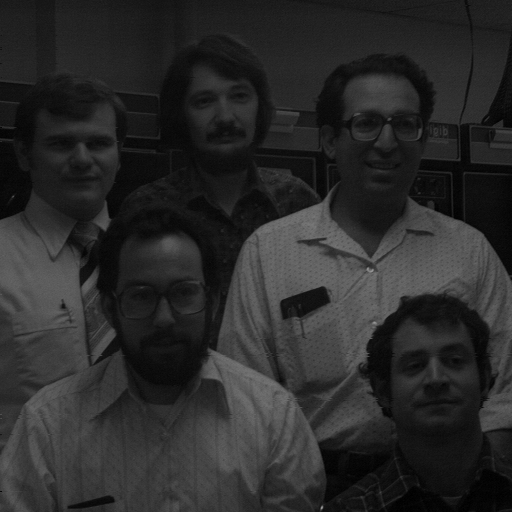...
Scientists used the RTPP as finally constructed to analyze data in a variety of biomedical domains including optical microscope images of optical serial sections of brain tissue, stained bone marrow smears, and tissue cultures using phase contrast and differential interference optics. The latter was used in tracking cell membrane extents of macrophages in tissue culture over time as the cells tried to phagocytize various types of asbestos fibers. The goal was to better understand fiber carcinogenicity and the dynamics of fiber ingestion [8, 9, 10]. The bone marrow smear image analysis was part of my Ph.D. dissertation [11, 12, TR-653, TR-655]. The RTPP was also used for 2D electrophoretic gel images for a variety of biological materials [13, 14, 15, 16, 17, 18, 19, 20, 21, 22, 23, 24, 25, 26, 27, 28, 29, 30, 31, 32], and for RNA electron micrographs of secondary structure, which was part of Bruce Shapiro's Ph.D. dissertation [33, 34, 35, 36, 37, 38, TR-BAS78].
Figure 1. Dr. Lewis Lipkin headed the project. His group started working on computer-controlled optical microscopy in the Perinatal Research Branch (PRB) of NINDB. The group later changed its name and institutes to the Image Processing Unit (IPU) in NCI in the Laboratory of Pathology. IPU later became the Image Processing Section (IPS) in NCI. The Section later became part of the Laboratory of Mathematical Biology (LMMB) in NCI under Dr. Charles DeLisi, Ph.D., and still later under Dr. Jacob Maizel, Ph.D.. The laboratory changed its name to the Laboratory of Experimental and Computational Biology (LECB) under Jake Maizel. The laboratory is currently refocused on nanobiology and is now called the Center for Computer Research Nanobiology Program (CCRNP) directed by Dr. Robert Blumenthal, Ph.D.(CCRNP has an additional research Web site).
...
| Div | ||||||||||
|---|---|---|---|---|---|---|---|---|---|---|
| ||||||||||
|
| Div | ||||||||||
|---|---|---|---|---|---|---|---|---|---|---|
| ||||||||||
|
...
| Div | ||||||||||
|---|---|---|---|---|---|---|---|---|---|---|
| ||||||||||
|
...





